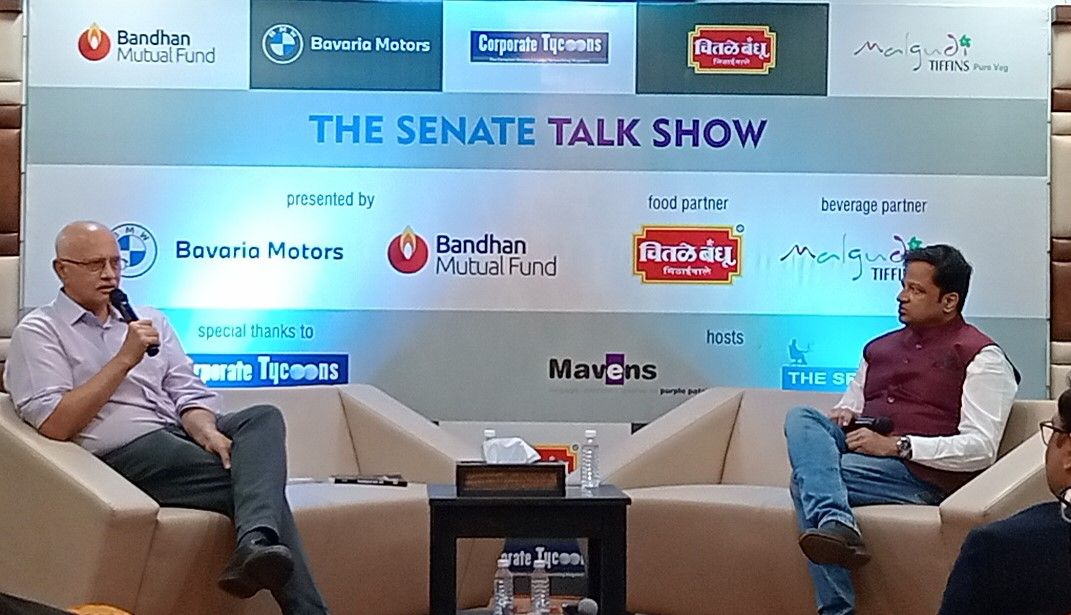By Chandran Iyer
Are you an entrepreneur feeling the frustration of hitting a growth plateau with your business? You’ve put in the hard work, overcome countless obstacles, and achieved some success, but now it seems like you’ve hit a wall.
You’re stuck in what feels like the endless cycle of the first orbit, unable to break free and propel your business to the next level of growth. If this sounds all too familiar, then you’re not alone.
Many entrepreneurs find themselves grappling with the challenges of scaling their businesses beyond the initial stages. But fear not, because Anand Deshpande, founder of Persistent Systems, has invaluable advice to offer.
His insights into transitioning from the first orbit to the second orbit can provide the guidance and strategies you need to overcome these obstacles and unlock new opportunities for growth. Let’s delve into his wisdom and discover how you can elevate your business to greater heights.
“The concept of “growing from one orbit to another” is a metaphorical framework propounded by the Indian billionaire and Founder of Persistent Sysems .Anand Deshpande to describe the progression of companies from one phase of growth to another. Deshpande uses the analogy of planets orbiting the sun to represent different stages of a company’s development.
In this metaphor, each orbit represents a distinct phase of growth:
- First Orbit: This is the initial phase of a company’s journey, characterized by startup challenges, experimentation, and laying the foundation for growth. Companies in the first orbit are often focused on survival, product development, and establishing a foothold in the market.
- Second Orbit: The second orbit symbolizes a phase of accelerated growth and expansion. Companies transitioning to the second orbit have successfully navigated the challenges of the first orbit and are now scaling their operations, entering new markets, and diversifying their offerings. This phase is characterized by increased revenues, market recognition, and organizational maturity.
Anand was being interviewed by entrepreneur and author and talk show host , Vikrant Vartak, Managing Director The Senate Business Centre. Anand released the second book of Vikrant “The 50 Dilemmas”.
Transitioning from the first orbit to the second orbit requires a strategic approach and certain key factors: which include
- Vision and Strategy: Clear vision and strategic direction are essential for making the transition. Companies need to have a well-defined roadmap outlining their goals, target markets, and growth strategies.
- Innovation and Adaptability: Successful transition often requires innovation and the ability to adapt to changing market dynamics. Companies must continually innovate their products, services, and business models to stay competitive and capture new opportunities.
- Operational Excellence: Achieving operational efficiency and scalability is critical for scaling up to the second orbit. This involves streamlining processes, optimizing resources, and building robust systems and infrastructure to support growth.
- Talent and Leadership: Building a talented team and effective leadership are essential for driving growth and managing the complexities of expansion. Companies need strong leadership capable of inspiring and guiding employees through periods of change and growth.
- Customer Focus: Customer satisfaction and loyalty are paramount for sustainable growth. Companies must prioritize customer needs, feedback, and experiences to maintain relevance and competitive advantage in the market.
Anand says to grow, companies have to transition from my company” to “our company” .
This is not easy as it involves evolving from a founder-centric or small team-driven operation to a more inclusive and collaborative organizational culture.
This shift requires fostering a sense of ownership, empowerment, and teamwork among employees, as well as promoting transparency, communication, and shared values throughout the organization. As the company grows and matures, it becomes less about individual contributions and more about collective efforts toward achieving common goals and objectives.
Anand also explains this framework saying the companies evolve along S-curves rather than linear trajectories.
He highlights that the growth of companies resembles the shape of the letter “S”. Initially, there’s a slow growth phase, followed by rapid acceleration, and eventually leveling off as saturation or maturity sets in. According to him, understanding where a company lies on this curve is crucial for strategic decision-making.
Deshpande emphasizes the importance of recognizing when a company is approaching the inflection points of its S-curve. At these junctures, he suggests that companies need to reinvent themselves, innovate, and explore new markets or technologies to sustain growth.
By embracing the concept of S-curves, Deshpande encourages businesses to adopt a dynamic approach to growth, rather than relying on static models. This mindset fosters agility, adaptability, and a willingness to disrupt the status quo, enabling companies to thrive in an ever-changing business landscape.


